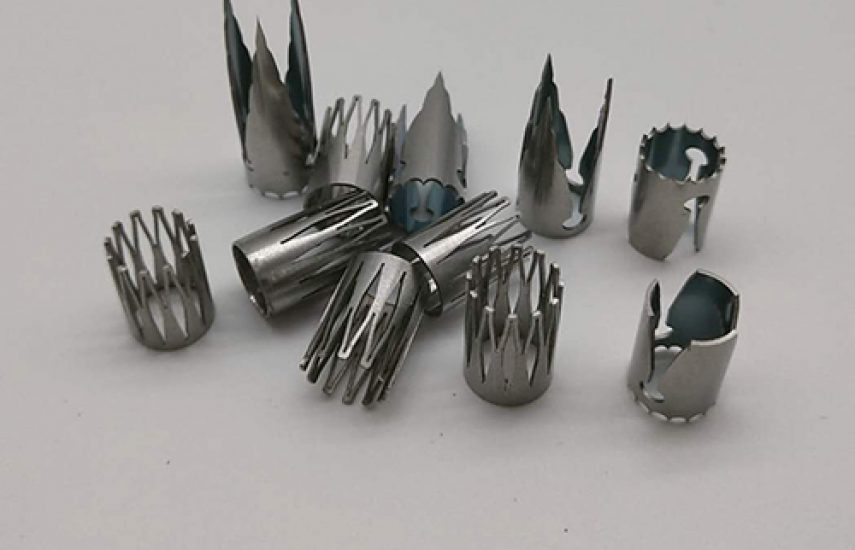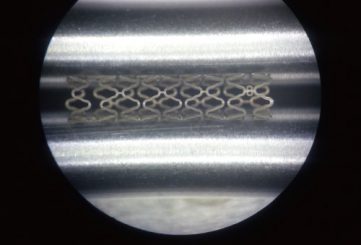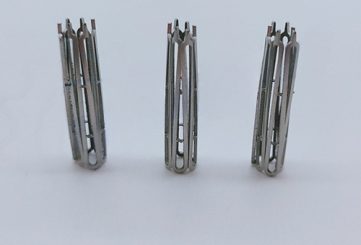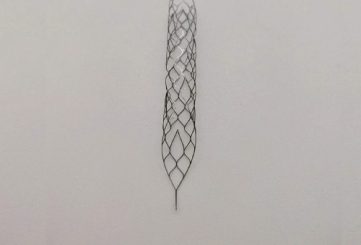هيكل مجهري لدعامة الصمام Ni-Ti 7 مم WT0.4 مم
Valve Stent Microstructure Ni-Ti 7mm WT0.4mm – advanced self-expanding valvular support
The Valve Stent Microstructure Ni-Ti 7mm WT0.4mm represents a state-of-the-art solution for interventional valve repair and replacement. Engineered with a precision Nitinol (Ni-Ti) microstructure, this self-expanding stent provides robust and adaptable support within the cardiovascular system. Its thin-walled design (WT0.4mm) and superior radial force minimize obstruction while ensuring optimal apposition, making it an innovative choice for complex anatomical challenges where sustained valvular integrity is paramount.
الميزات الرئيسية:
- Self-Expanding Nitinol: Offers excellent shape memory and superelasticity for precise deployment and sustained radial force.
- Thin-Walled Design (WT0.4mm): Minimizes profile for easier delivery and reduces potential for flow obstruction.
- Optimized Microstructure: Ensures high fatigue resistance and long-term durability in dynamic physiological environments.
- Radiopaque Markers: Facilitate accurate visualization and precise placement during fluoroscopy.
- Biocompatible Surface: Promotes endothelialization and reduces thrombogenicity.
Certification and Standards:
Our Valve Stent Microstructure Ni-Ti 7mm WT0.4mm is manufactured under stringent quality control protocols, adhering to the highest international medical device standards, including ISO 13485:2016 and CE marking requirements. Each device undergoes comprehensive testing to guarantee its safety, performance, and efficacy in clinical applications.
النيتينول (NiTi)، وهو سبيكة من النيكل والتيتانيوم، مشهور بمرونته الفائقة وذاكرته الشكلية، مما يجعله رائدًا في التطبيقات الطبية. بفضل قوة شد تصل إلى 1200 ميجا باسكال ومعامل مرونة يتراوح بين 40 و75 جيجا باسكال، يتفوق النيتينول في البيئات الصعبة.
The Valve Stent Microstructure Ni-Ti 7mm WT0.4mm is primarily indicated for use in interventional cardiology and vascular surgery for the treatment of valvular diseases. Its self-expanding design and precise microstructure make it suitable for a range of procedures where stable and long-term valvular support is required. Potential applications include, but are not limited to:
- Transcatheter heart valve repair or replacement procedures.
- Support for native or prosthetic valves in complex anatomical situations.
- Management of valvular stenosis or regurgitation.
- Procedures requiring precise and gentle deployment through minimally invasive approaches.
- Stent Diameter: 7.0 mm (Self-expanding to nominal diameter)
- Wall Thickness (WT): 0.4 mm
- Material: Medical Grade Nitinol (Ni-Ti)
- Working Lengths: Available in various standard lengths to accommodate diverse anatomical needs.
- Radial Force: Optimized for sustained apposition without compromising flow.
- Fatigue Resistance: Engineered for long-term durability in dynamic cardiovascular environments.
- Sterilization: EO (Ethylene Oxide) Sterilized.
- Packaging: Individually sterile-packed for single-use application.
- Compatibility: Compatible with standard delivery systems and endoscopic channels for precise deployment.
- Radiopacity: Enhanced for clear visualization during fluoroscopic guidance.





